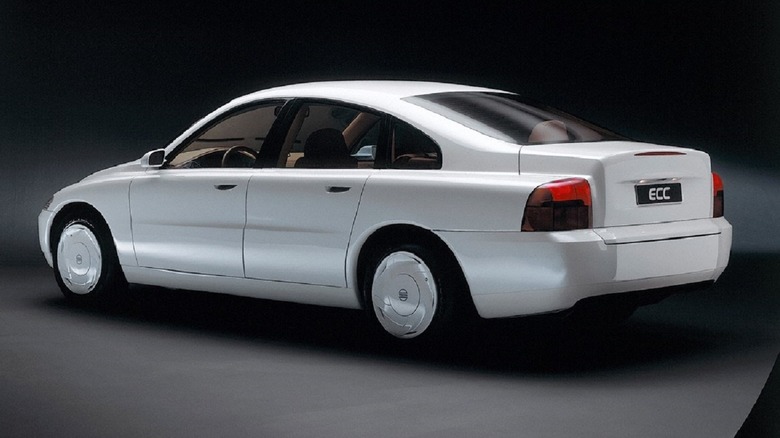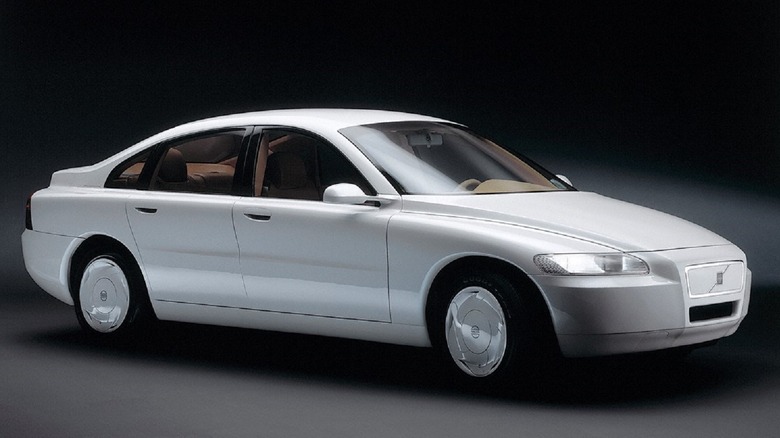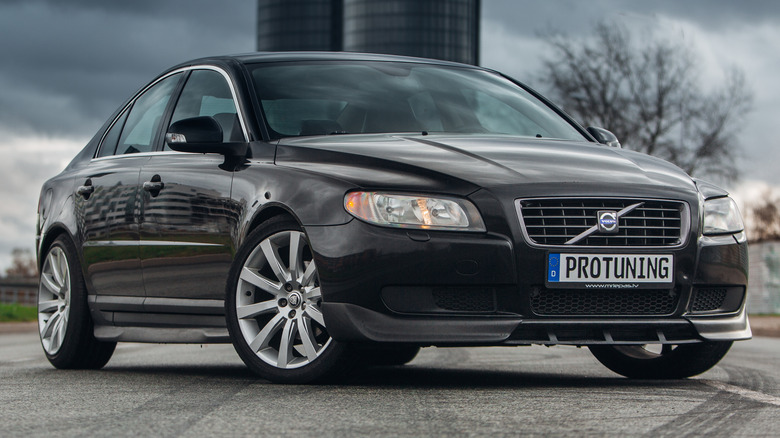The Volvo Concept Car That Killed Its Boxy Design For Good
When it comes to the world of cars, many things can drive the industry forward. Changing times, demand from buyers — and then there are concept cars. In many cases, concept cars are viewed as gimmicks designed by automakers to brag about what they can really do, but without having to actually design the car well enough to be sold. However, there are a few notable concept cars from history that actually helped change the direction of the companies that designed them. One example of this is the 1992 Volvo Environmental Concept Car, often referred to as the ECC.
This concept car from Volvo was introduced to the world at the 1992 Paris Motor Show, according to the automaker. It wowed the crowd with its advanced use of technology and although many people may not have noticed at the time, it sported something that would put an eventual end to the boxy style that had dominated Volvo cars — and many other brands — up until that point. This car was so special that Peter Horbury, who was Head of Design for Volvo cars at the time of the ECC, said that it was "the car that allowed me to change Volvo forever," according to Volvo.
What made this concept car special?
One of the things that makes this concept car from Volvo special is that it was a hybrid vehicle. Hybrids date back to the late 1800s when the Lohner-Porsche Elektromobil was conceived, but of course, it was decades later when they were sold to the general public. The first modern hybrid was the Toyota Prius launched in 1997, though it was only marketed in Japan, according to How Stuff Works. For its part, this hybrid concept car from Volvo was powered by a single electric engine that worked with a gas turbine; it had a range of 100 miles and just under 100 horsepower.
In retrospect, this isn't what should have caught everyone's attention — it should have been the fact that the ECC had actual curves and was more than just a stoic box like earlier Volvo models. Perhaps the reason the appearance of the car didn't strike more of a nerve is that most people simply don't take the way concept cars look seriously, as it's more about the technology that could be used for future production models.
Changes after the ECC
Change in auto design takes time but upon taking a closer look, you can sometimes see the gradual adjustments as they happen. For Volvo, the company began to phase out the classic boxy design it was known for during the mid to late 1990s, and the ECC is credited with inspiring Volvo to move in that direction. One example of this shift for the company is the Volvo S80, which was released in 1998, according to Volvo. Not only because the S80 looks similar to the ECC in many ways, but mostly because it was the farthest thing from a boxy design that the company had ever released. In fact, the automaker notes on its website that the concept car "influenced" the S80's design.
That marked the end of Volvo's boxy cars, and the market has since shifted away from that design language entirely. Although many car fans think of concept cars as mere show ponies for companies to take to events, the Volvo Environmental Concept Car proved to be an agent of change for the automaker, and it has been moving forward since. The boxy design had its time and place, but we think what came after was much better.


